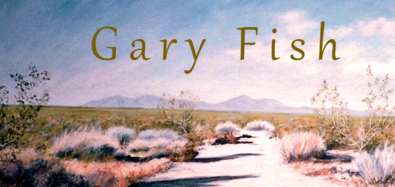
ArgosPaintPal.com
How Types of Lighting Affect A Painting
This page will deal with how specific types of lighting affect how the colors of a painting look. Flourescent and incandescent lighting being the lighting most people use.
____
The painting shown below was not altered according to some image processing program. I use a specially designed lamp system in my studio equipment that uses the combination of both common lighting types. A separate light for flourescent and a separate light for incandescent. Each can be turned on or off independent of the other one.
The idea behind that design being the combination of both these lighting types used in conjunction with each other creates a very close proximity to the light spectrum of natural daylight. For landscape painting, one of the primary goals is to "paint light", or try and convey to the viewer what the natural light looked like to the artist as he painted a particular scene. Impressionist style artwork depends heavily on "capturing" these fleeting effects of daylight. I would have to classify myself as an Impressionist painter.
As can be seen by the examples below, the difference between the two common types of lighting can be quite dramatic. It's also very easy to ruin a good landscape painting by using only one of these common types of lighting during painting sessions. In the very early days of painting, the only alternative to this was for an artist to paint only during the main part of the day, when natural daylight was what was used, since electricity had not been invented yet. Working by candlelight was only practical for simple black, white and gray colors.
As can be seen, all of the three examples shown (Incandescent, Flourescent and Normal light) look acceptable by themselves. That was only accomplished by using both incandescent and flourescent together. If I had tried to paint the scene (or any other landscape scene) using only one of these types of lighting, the painting simply would not look realistic as far as lighting is concerned.
Though many artists have no intention of conveying a natural look in there paintings, it's essential for anyone doing what I do, which is to convey to the viewer the effects of the existing light on the environment of a scene being painted.
From that standpoint, it's what separates the "boys from the men". Though it might look like childs play, it's only because an artist has tried to master the challenging task of conveying natural, outdoor lighting effects using only paint!
(Enlarged view of each image shown below by clicking lower right-hand corner of image)
Mendocino Coastal Inlet painting
under various lighting -FLOURESCENT lighting
- colors appear cooler because flourescent bulbs emphasize the bluer colors of the spectrum.INCANDESCENT lighting
- colors appear warmer because incandescent bulbs emphasize more yellowish colors of the spectrum.
Notice that while both the images above are shown under specific lighting, by themselves, they also look acceptable as representative of the scene. The one on the left has a slightly blue tint, the one on the right has a slightly yellow tint. For the painting to look most natural, both types of lighting were utilized. This can only be accomplished having painted the scene using BOTH types of lighting.
Mendocino Coastal Inlet painting
under natural lighting -NATURAL, balanced daylight.
- Both
Florescent and Incandescent lighting used at the same time.Side view of painting showing how the canvas is painted and wrapped around the edge. Known as a "canvas wrap" or wrap-around canvas.
Copyright © Gary Fish. All rights reserved.





